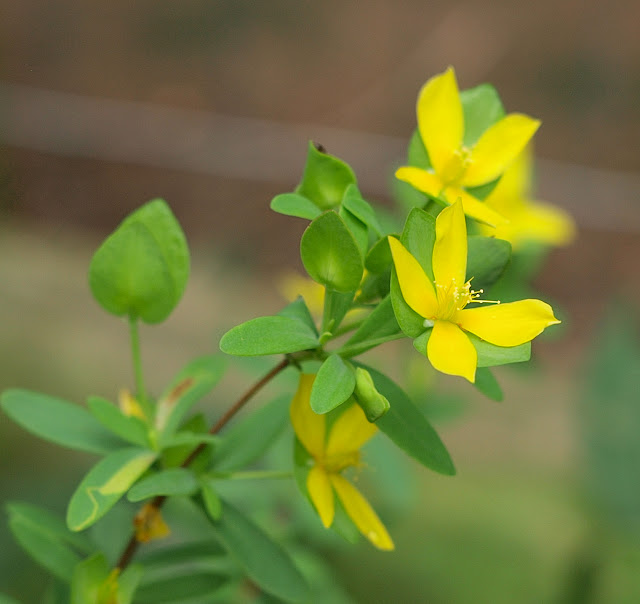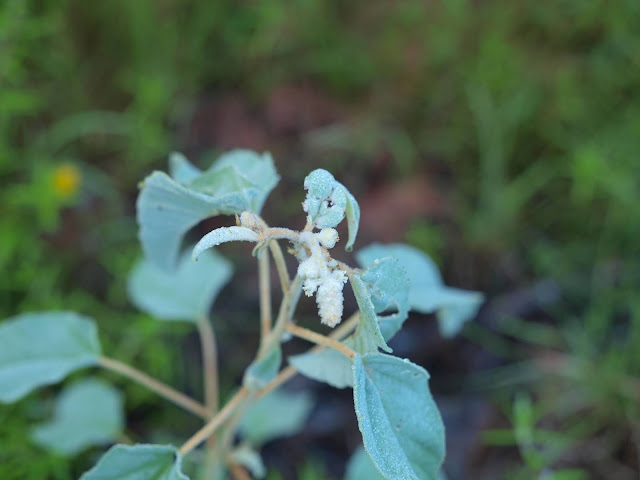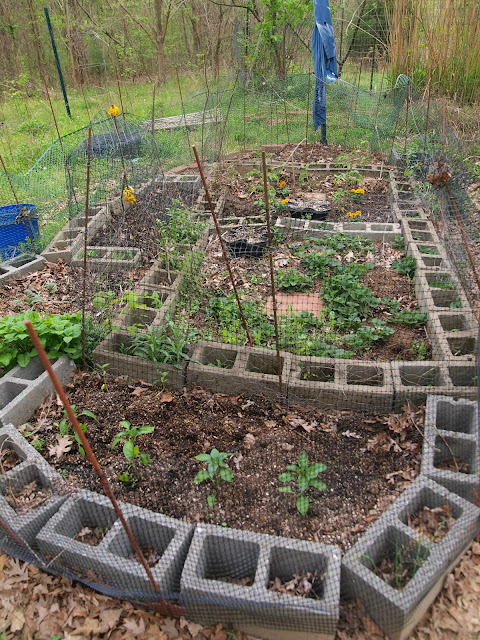St. Andrew's cross, Hypericum hypericoides on August 22nd
This is a plant called St. Andrew's cross, Hypericum hypericoides, which is a member of the St. John's Wort family Hypericum. It is a very common plant in the Southeastern United States. One of the main differences visually between this and St. John's Wort is that the St. Andrew's cross has four petals, placed oblong in a 'winged' fashion, while the St. John's Wort has five evenly spaced petals. The St. John's Wort contains folk medicine qualities that some believe in, and some don't. St. Andrew's cross was also valued by the Native Americans for it's help in fighting certain inflammations and pain.
I believe in the past I have called this a 'yellow lespedeza', if only to myself, because the leaves do resemble the lespedeza sericea. And, it is true that there are other colors and more showy versions of lespedeza than the one that has been wilded on our hill (back more than thirty years ago, I am told). Today, after last night's rain, I saw the yellow flowers on this plant and knew this was very likely something else - something worth identifying. I am reading that it prefers moist woodlands and blooms from early spring to autumn - but this is the first time I have seen it this year. I think the rain might have brought it out, and the turn to the slightly colder weather. It is directly underneath where our black hollyhocks have been all year - and looking like lespedeza is probably the only reason it wasn't weeded out.
It is amazing what you find when you stop and look - and then follow your curiosity.
As a contrast, this is what the goldenrod looks like right now. I would like to get a better picture of the seed head forming, it is a beautiful structure.
And I think what I have here is a Trifolium arvenase, or rabbitfoot clover (harefoot clover) - I'm going to have to go track it down again and try to get another picture. I took this one on the fly the other day - and all I can remember is it is somewhere along the main road!








Comments
Post a Comment